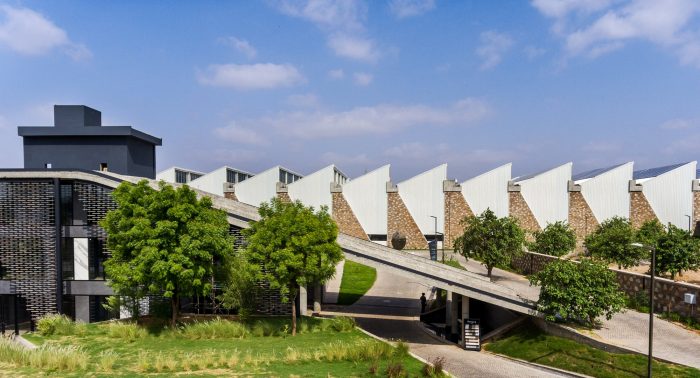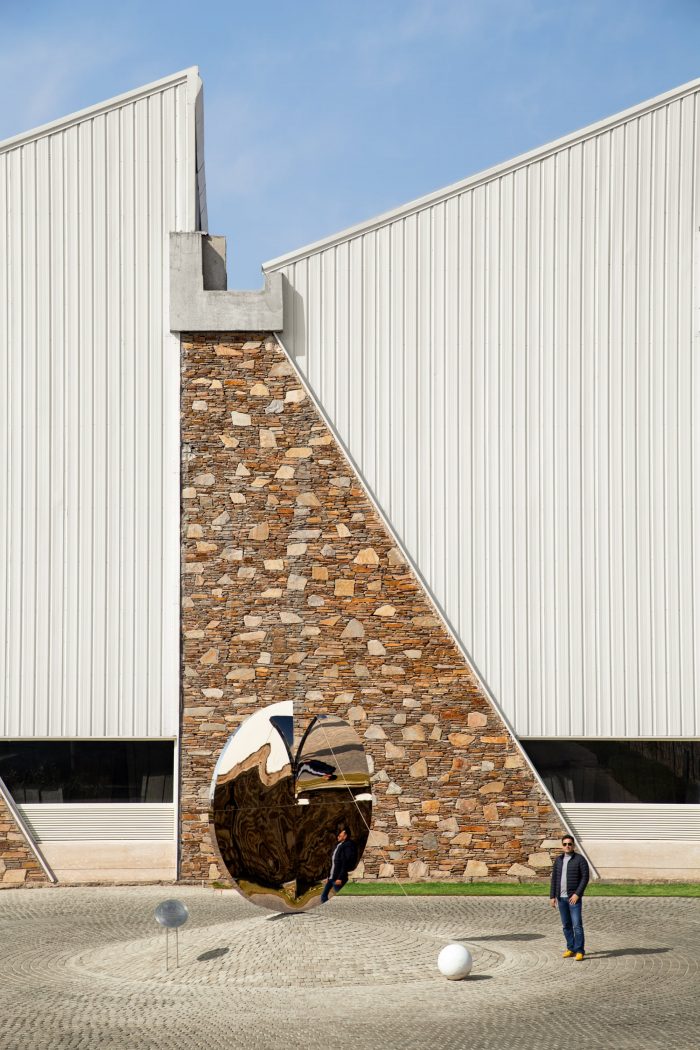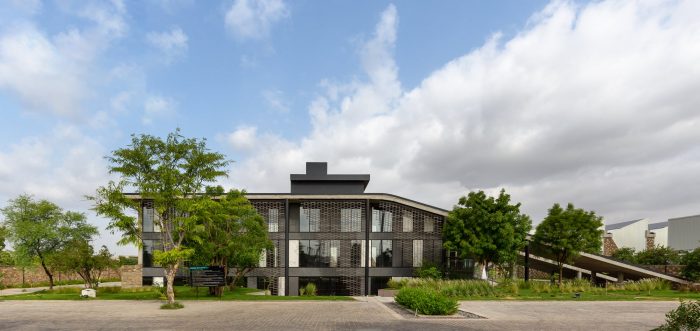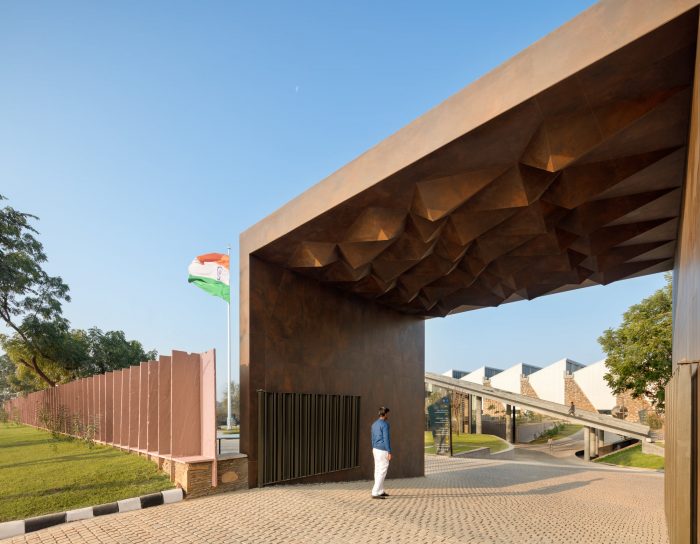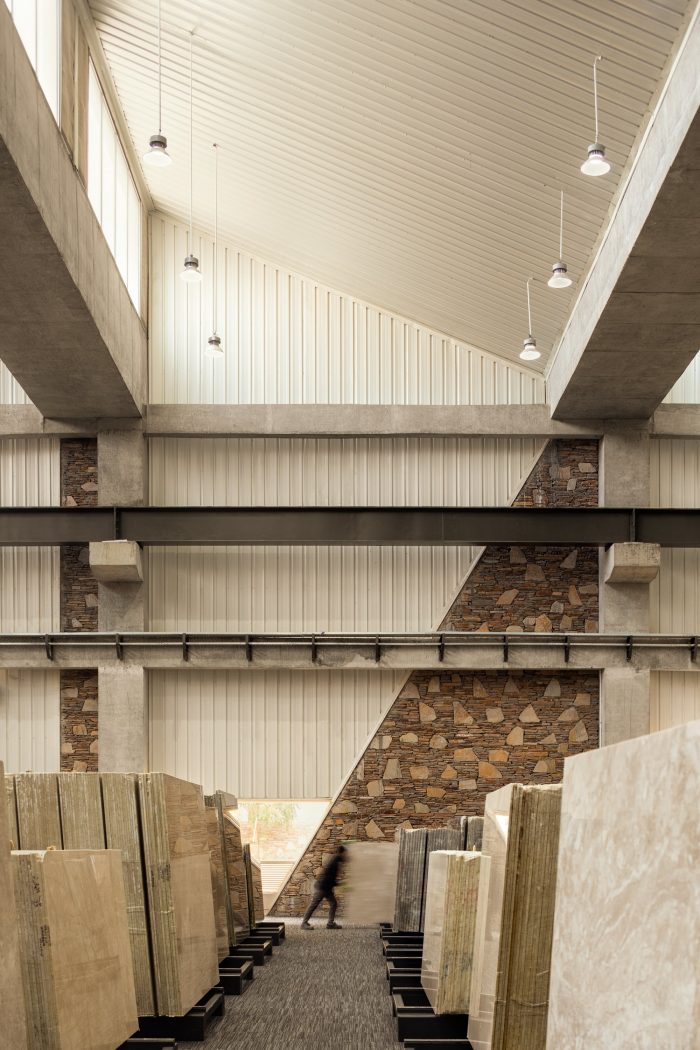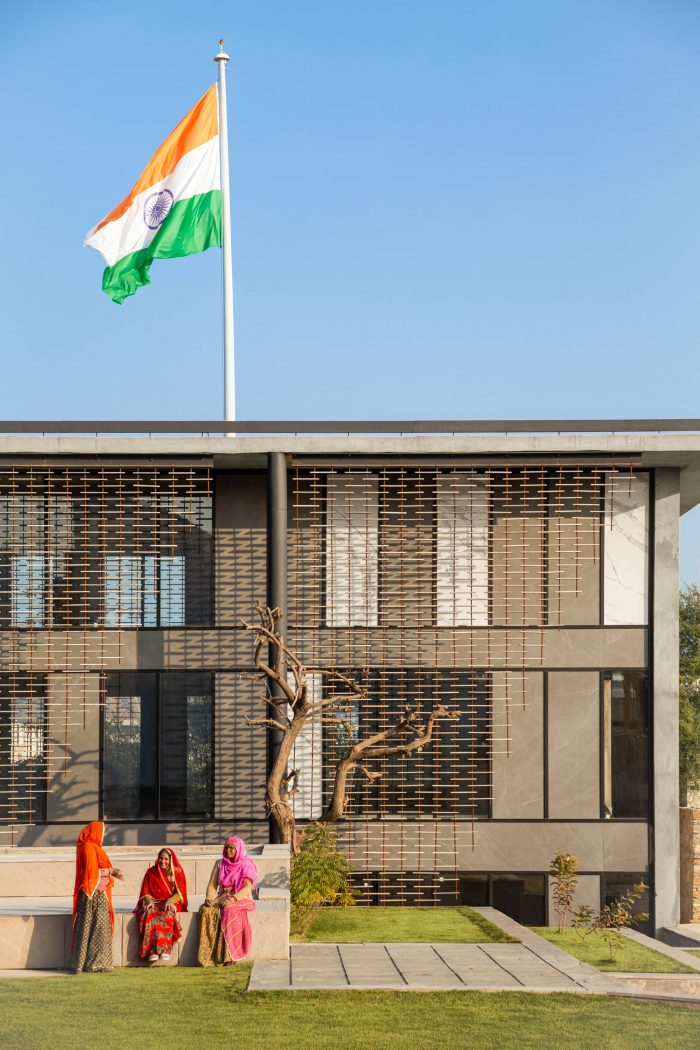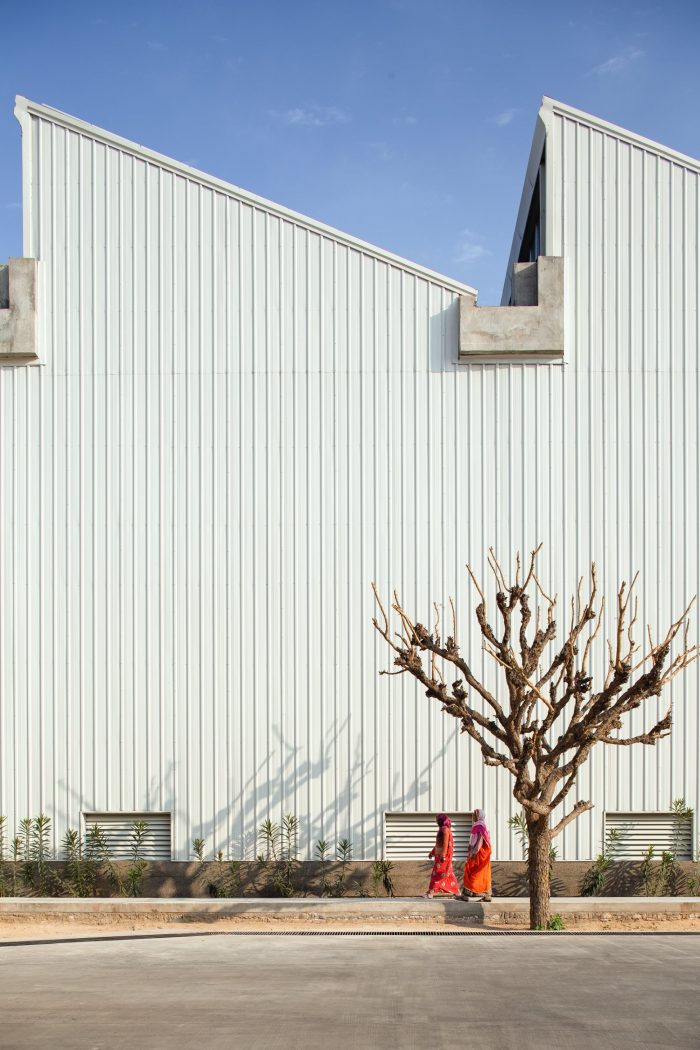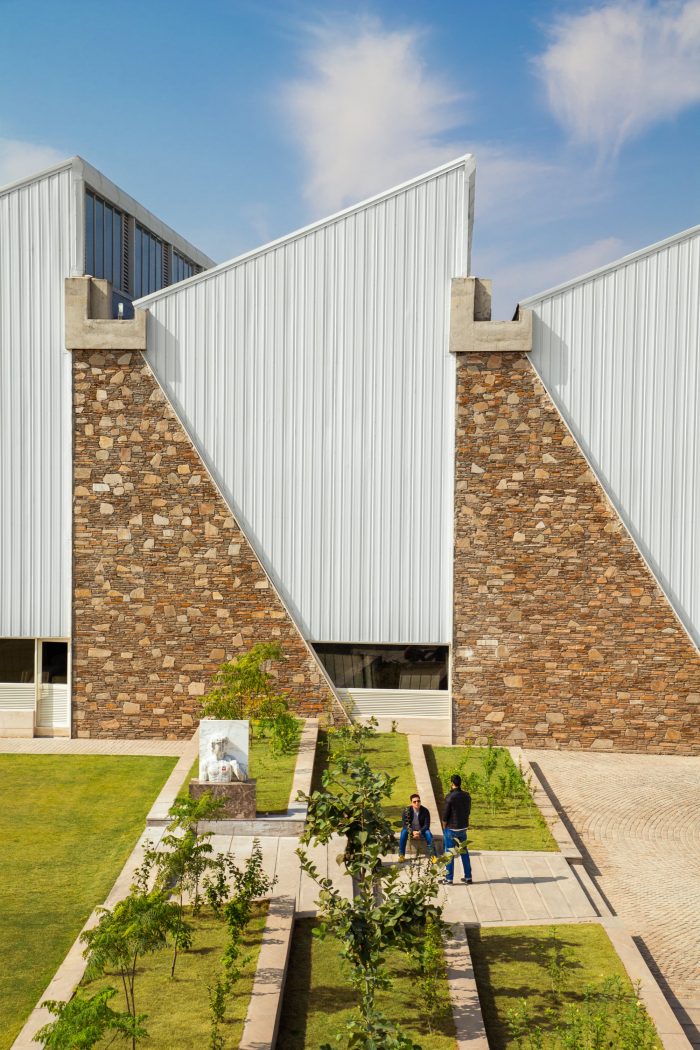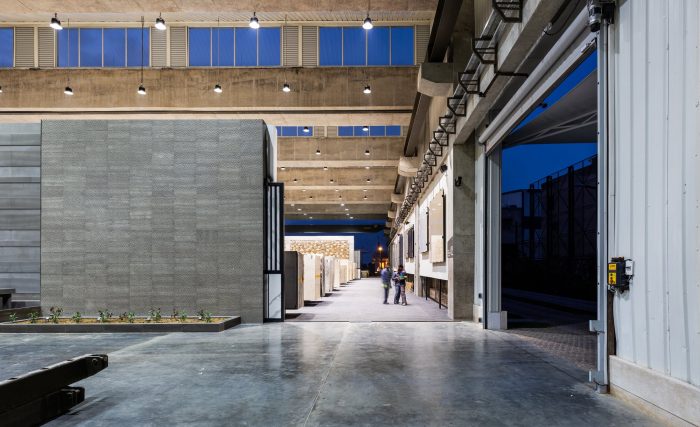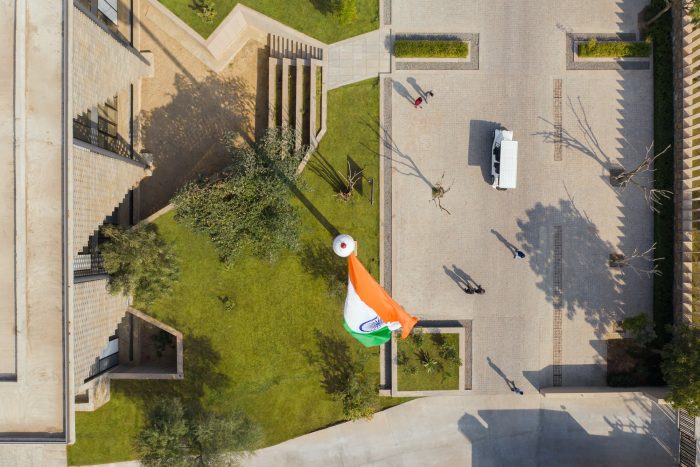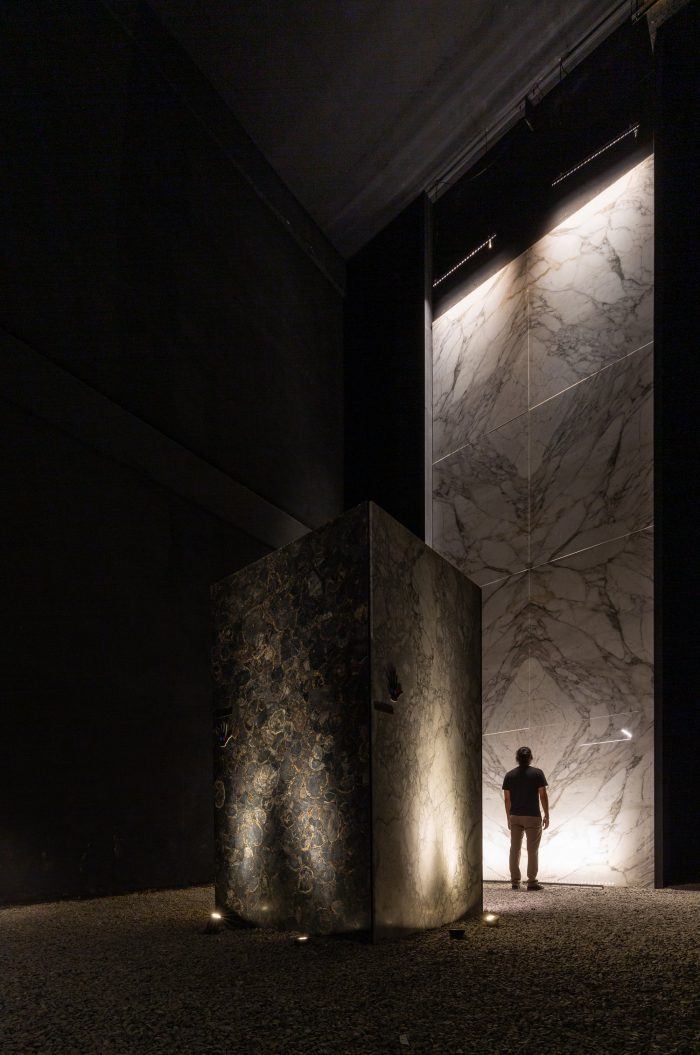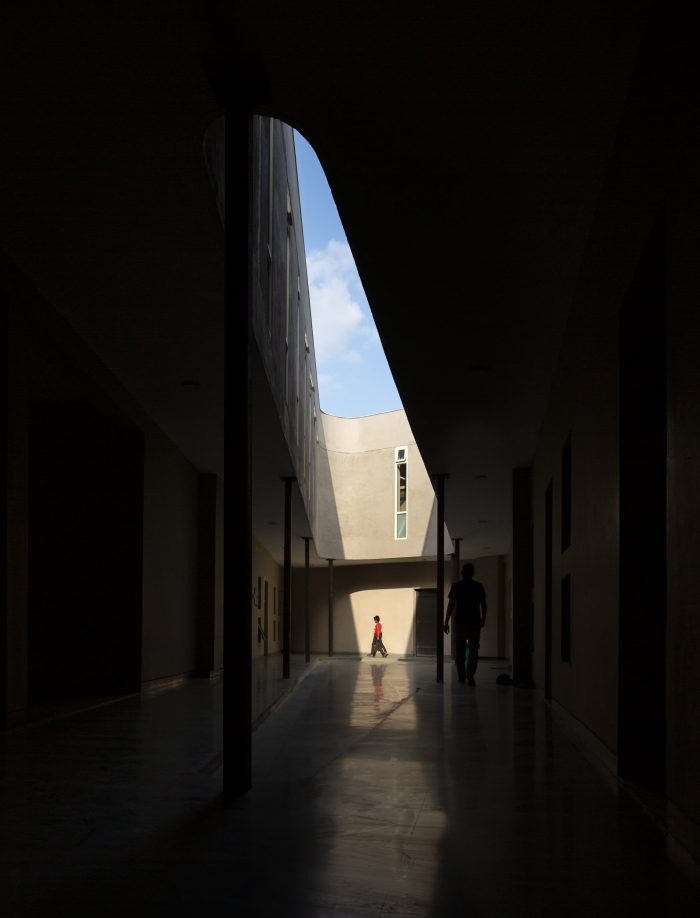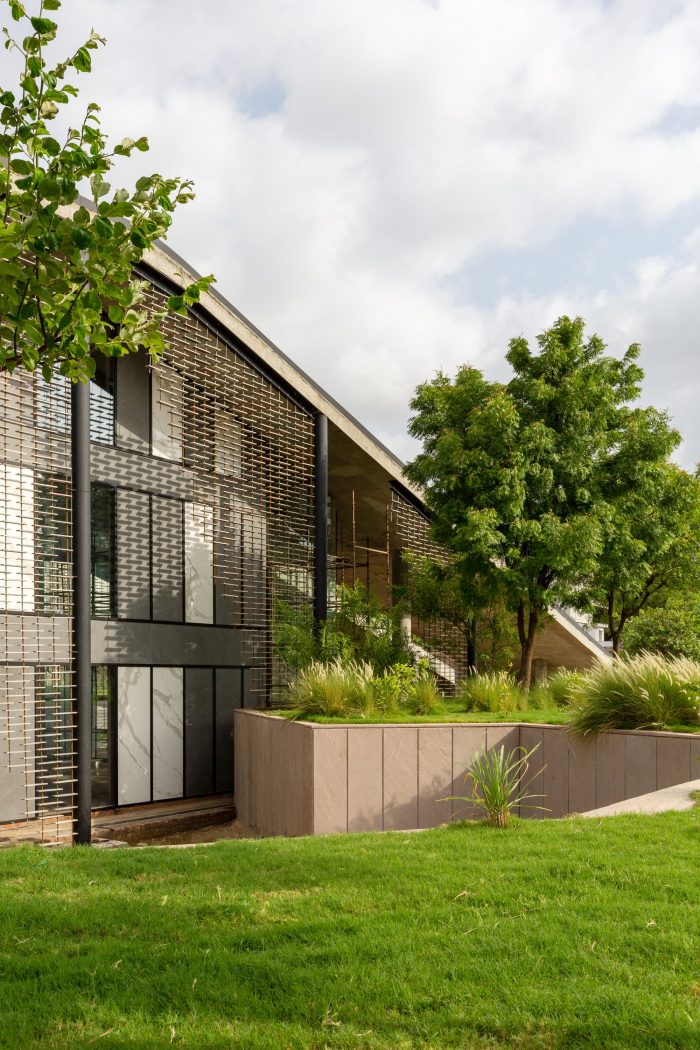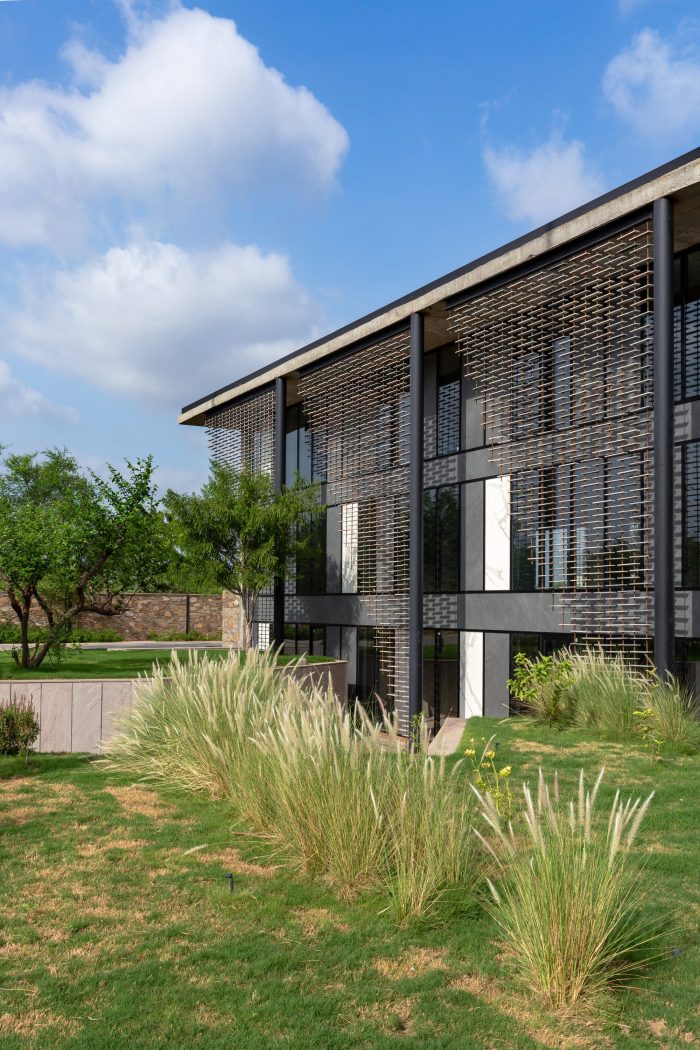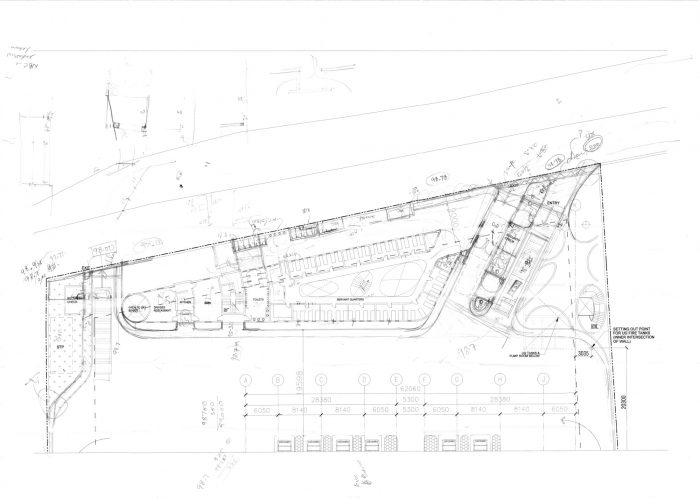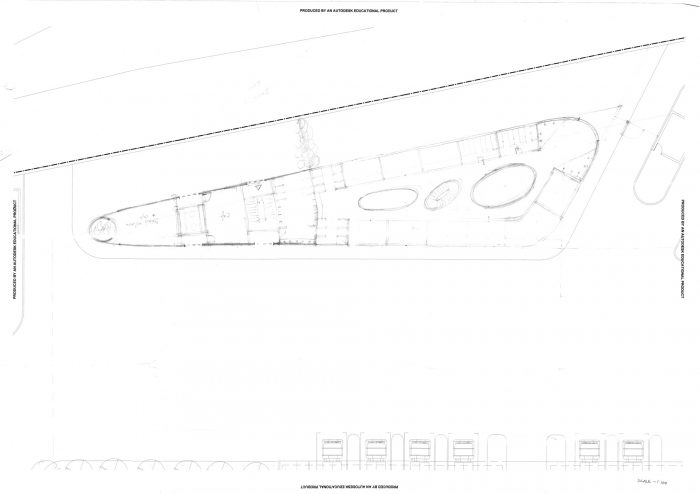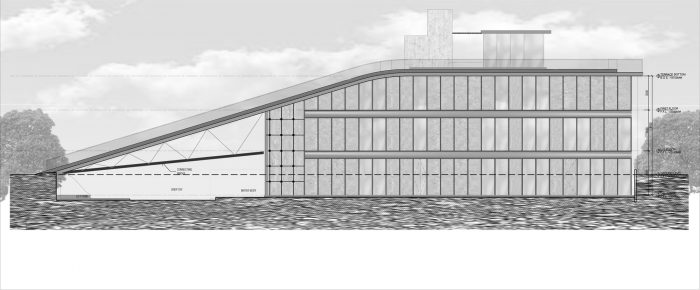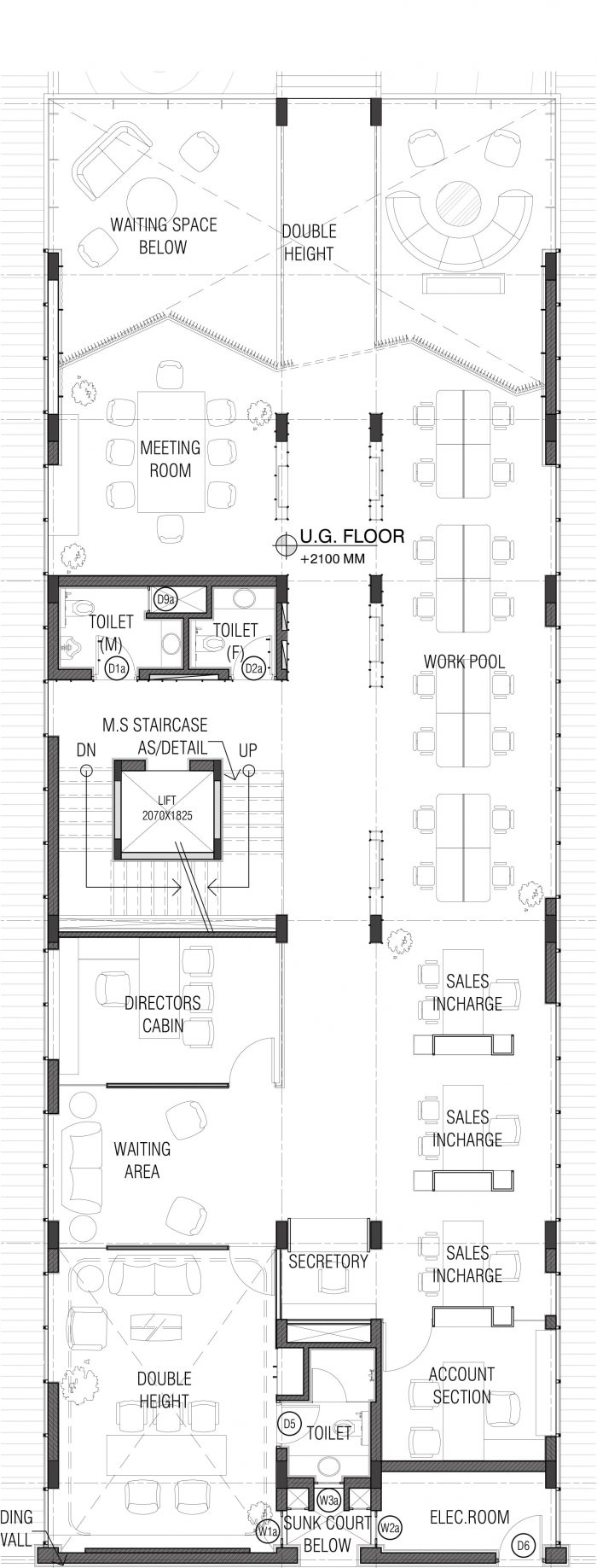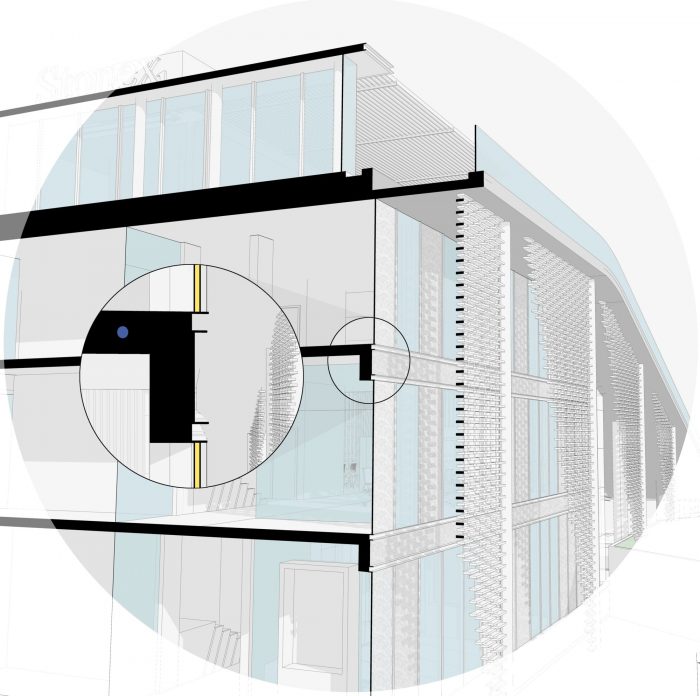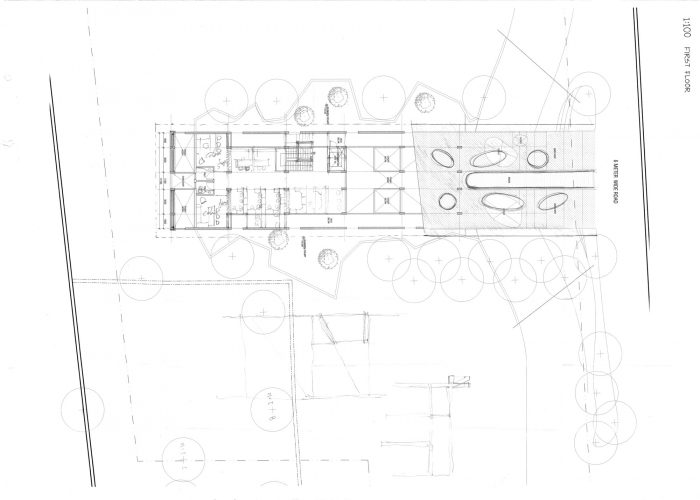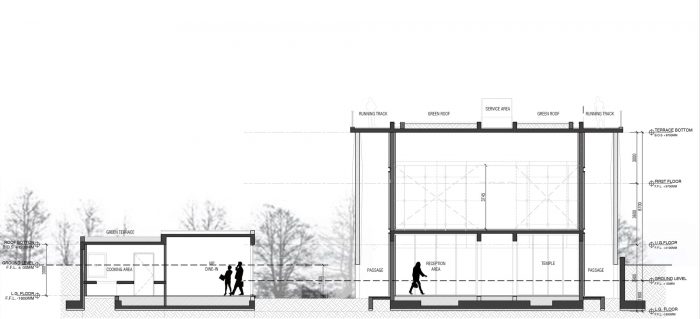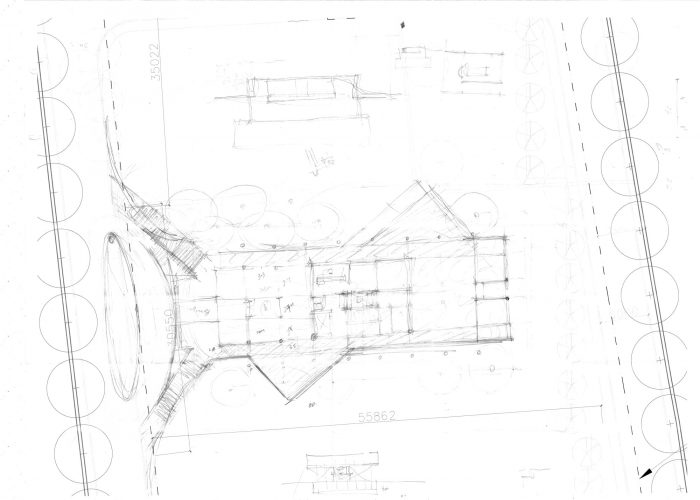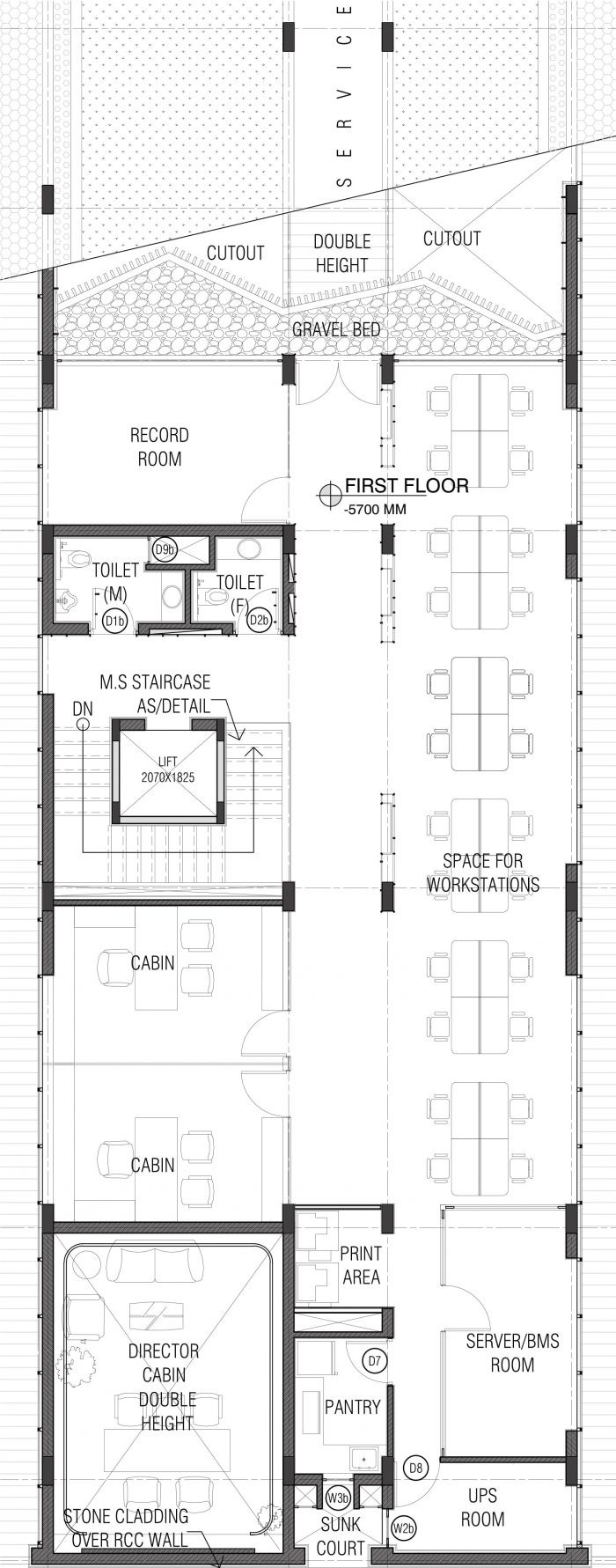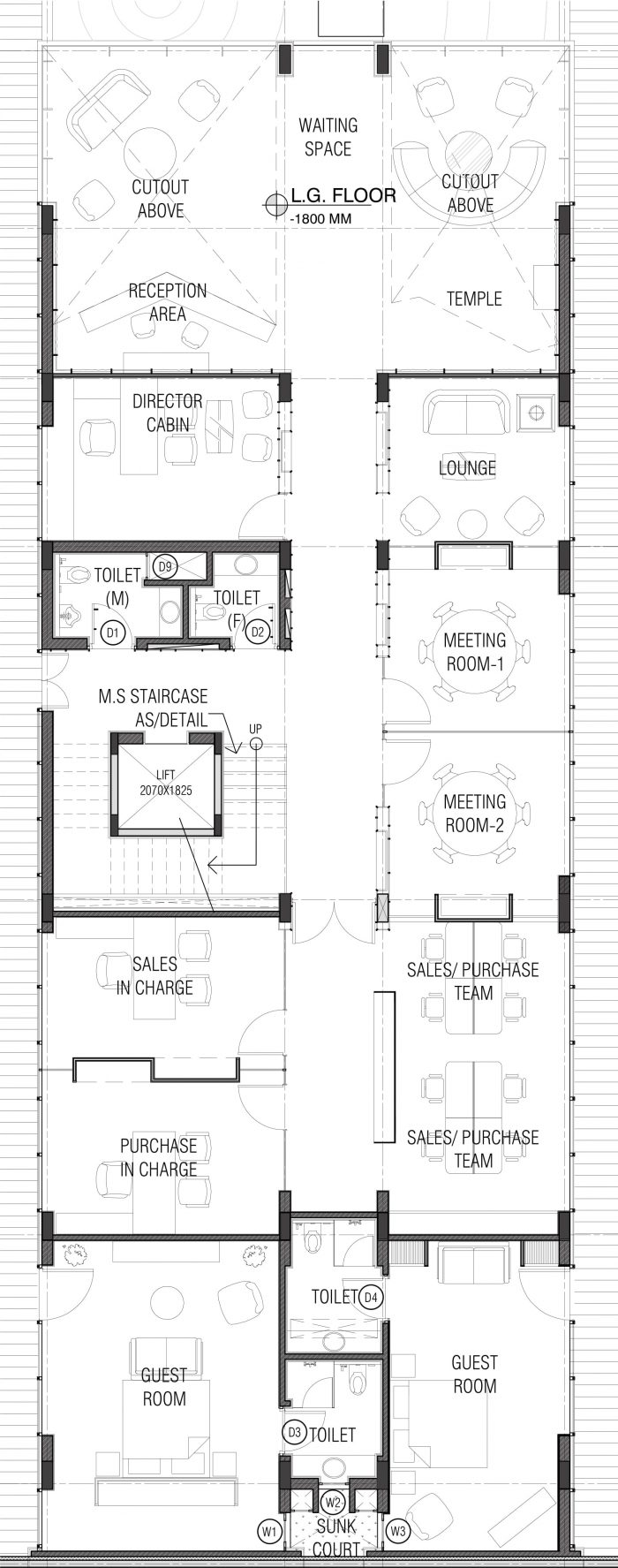Stonex India的行政和工业综合体是Kishangarh的一个突出的地标。在不同的系统和规模中,原则的动态排序与对场地的反应之间的同时互动的产物,该综合体成功地在工业景观中开辟了自己的位置。生产。工业大棚。遵循场地的要求和逻辑上的合理规划,生产区在东西方向上相当不寻常地定向。
Stonex India’s administrative and industrial complex serves as an eminent landmark in Kishangarh. Product of simultaneous interactions between dynamic ordering of principles across varying systems and scales, and responses towards the site, the complex succeeds in carving out a niche of its own amidst the industrial landscape. Production: The Industrial Shed. Adhering to exigencies of site and logistically sound planning the manufacturing block orients rather unconventionally in the East-West direction.
该方向被战略性地利用,纳入了互补的系统。引入了北面的轻型桁架,以23度的合适角度向南倾斜,为光伏电池板提供了充足的表面。从远处看,预制的白色金属翼板给整个结构带来了浮动的轮廓。在更近的地方观看时,石制扶壁使建筑显得很接地气。
The orientation is strategically exploited by incorporating complementary systems: North light trusses are introduced, sloping at a suitable angle of 23 degrees towards the south providing for ample surface for photovoltaic panels. Prefabricated white metal flutters give the entire structure a buoyant profile, when looked at from afar. The stone buttresses make the building appear grounded at a more proximal viewing.
朝向东边和西边的一面大部分是空白的,除了连接住户和周围环境的小窗户。窗户也创造了一种风,穿过棚子的高度,通过通风器沿着北面的轻质桁架排出,因此避免了顶部的热袋,并有效地将建筑冷却了大约10-12度。该建筑的设计使空间得到了合理的利用,允许最大可能的绿色覆盖和软景观。
The sides facing east and west are mostly blank, barring the small windows that connect the occupants with the surroundings. The windows also create a wind draft across the height of the shed expelled through the ventilators along the north light trusses therefore avoiding hot pockets at the top and effectively cooling the building by about 10-12 degrees. The building is designed such that the spaces are used judiciously, allowing for maximum possible green cover and softscaping.
其他可持续发展措施包括使用生物污水处理厂,回收废水并用于冲洗厕所;雨水收集技术使地下水位得到补充;安装在屋顶的太阳能电池板产生约1兆瓦的能量(足以满足工厂的电力需求)。代表。办公室。该建筑的设计围绕着相互尊重周围环境和自然的概念。建筑形式被提升并沉入地面,远离现场已有的树木。
Other sustainable measures include the use of bio STPs that recycle waste water and use it for flushing toilets; rainwater harvesting techniques keep the groundwater table recharged; solar panels installed on the roof generate about 1 megawatt of energy (sufficient enough to fulfill the power requirements of the factory). Representation: The Office. The design of the building revolves around the concept of mutually respecting the surroundings and nature. The built form is raised and sunk into the ground away from trees already existing on site.
因此,建筑体量和地面被打穿,以创造出下沉式庭院,并在土层冷却的下层建立一个露天剧场。由于部分位于地下,这个古怪的建筑群定义了一个无缝的轮廓,由石头和绿色植物组成的屏风装饰着整个屋顶,一扫而空。拉贾斯坦邦炎热干燥的气候被这个部分下沉的建筑所抵御,在夏季保持凉爽,在冬季保持温暖。这是由地球护堤和地球耦合的自然现象实现的。室内的温度在辐射冷却的帮助下被调节,使建筑的运行成本提高了60%。
Consequently, the built mass and the ground is punctured to create sunken courtyards and an amphitheater within the earth-cooled lower floor. Being partly underground, the eccentric mass defines a seamless silhouette adorned by screens in stone and greenery climbing up the entire roof in a sweep. The hot and dry climate of Rajasthan is combated by the partly sunk mass, staying cool during summers and warm during winters. This is achieved by the natural phenomena of Earth Berming and Earth Coupling. The temperatures indoors are regulated with the help of radiant cooling, allowing for a 60% efficiency in the running cost of the building.
同时,这也导致了暖通空调负荷减少了近40%。此外,楼板也采用辐射冷却来调节温度。办公楼的外墙在两块层压板之间夹了一块泡棉板,以进一步隔绝室内的温度。该建筑的外墙由一个包围性的石屏来补充,石屏是利用附近采石场的废石和现场产生的石料废料制作的。这个屏风为东南和西边的强光提供了遮阳的作用。交织在一起的石块的光和影创造了一种俏皮的视觉吸引力,它们似乎漂浮在不同的水平上。
Also, this has led to HVAC load cutting by almost 40%. The floor slabs are additionally radiant cooled to regulate temperatures. The skin of the Office building sandwiches a puff panel between two laminam panels to further insulate the interiors. The façade is complimented by an enveloping stone screen that is fabricated using the waste stone from a nearby quarry and the stone wastage that is generated on site. This screen provides solar shading from the south-east and west glare. A playful, visual appeal is created by the light and shadow of interwoven stone blocks that appear to be floating at different levels.
Architects: Urbanscape Architects
Area : 20000 m²
Year : 2019
Photographs :Andre Fanthome, Suryan // Dang
Manufacturers : Jotun, ALCOI, Cree, Hindware, Jaguar, Mitsubishi Electric, Saint-Gobain
Lead Architects : Dinesh Panwar, Ajay Bhardwaj
Landscape : Akshay Kaul & Associates
Mechanical : dbHMS
Electrical : dbHMS
HVAC : dbHMS
Engineering : Friends Engineering Works
Lighting : Light Vision India
Civil : P Arora & Associates Pvt Ltd
Structural : P Arora & Associates Pvt Ltd
Design Team : Prasanjeet, Anuj, Gunjan, Prachi
Plumbing : dbHMS
PMC : Aarj Concepts
Façade : Alcoi India Private Limited
Project Management Consultancy : Aarj Concepts
Facade : Alcoi India Private Limited
City : Kishangarh
Country : India




